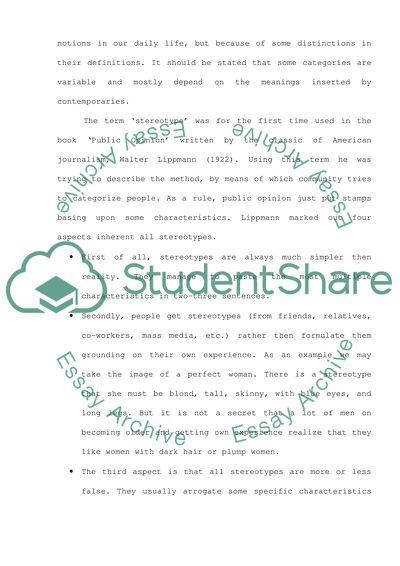Cite this document
(“Racial and Ethnic Distinctions Essay Example | Topics and Well Written Essays - 1500 words”, n.d.)
Racial and Ethnic Distinctions Essay Example | Topics and Well Written Essays - 1500 words. Retrieved from https://studentshare.org/social-science/1540765-stereotyping-has-been-described-as-a-cognitive-energy-saving-device-manstead-et-al-1995-critically-examine-the-nuture-of-stereo-typing-and-consider-th
Racial and Ethnic Distinctions Essay Example | Topics and Well Written Essays - 1500 words. Retrieved from https://studentshare.org/social-science/1540765-stereotyping-has-been-described-as-a-cognitive-energy-saving-device-manstead-et-al-1995-critically-examine-the-nuture-of-stereo-typing-and-consider-th
(Racial and Ethnic Distinctions Essay Example | Topics and Well Written Essays - 1500 Words)
Racial and Ethnic Distinctions Essay Example | Topics and Well Written Essays - 1500 Words. https://studentshare.org/social-science/1540765-stereotyping-has-been-described-as-a-cognitive-energy-saving-device-manstead-et-al-1995-critically-examine-the-nuture-of-stereo-typing-and-consider-th.
Racial and Ethnic Distinctions Essay Example | Topics and Well Written Essays - 1500 Words. https://studentshare.org/social-science/1540765-stereotyping-has-been-described-as-a-cognitive-energy-saving-device-manstead-et-al-1995-critically-examine-the-nuture-of-stereo-typing-and-consider-th.
“Racial and Ethnic Distinctions Essay Example | Topics and Well Written Essays - 1500 Words”, n.d. https://studentshare.org/social-science/1540765-stereotyping-has-been-described-as-a-cognitive-energy-saving-device-manstead-et-al-1995-critically-examine-the-nuture-of-stereo-typing-and-consider-th.


